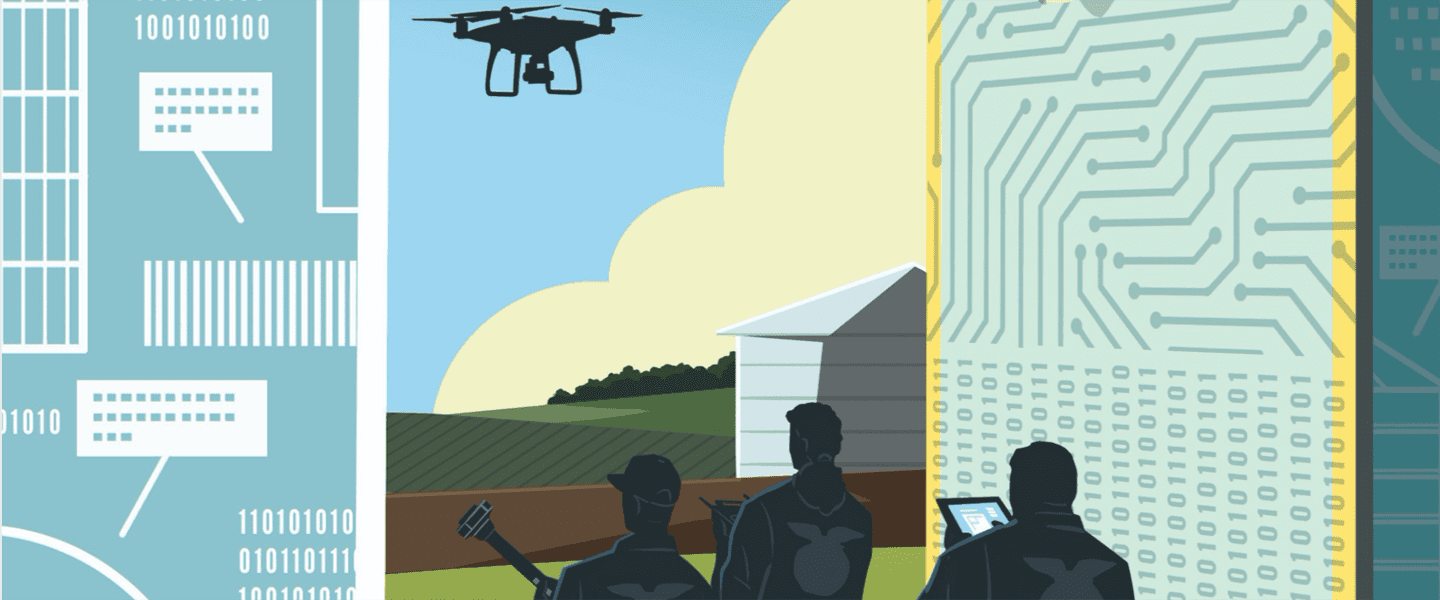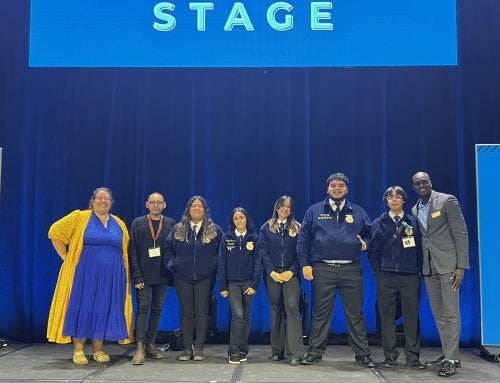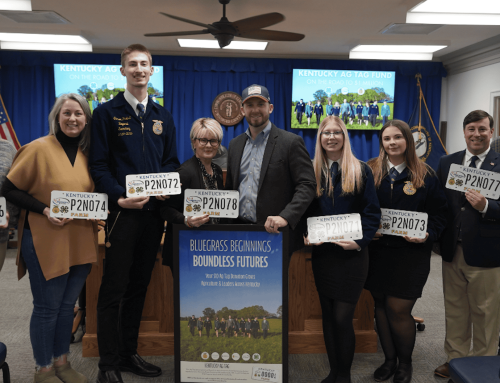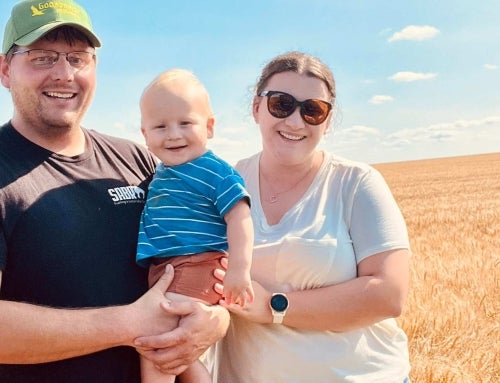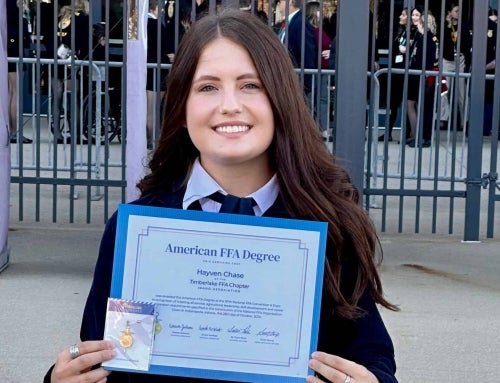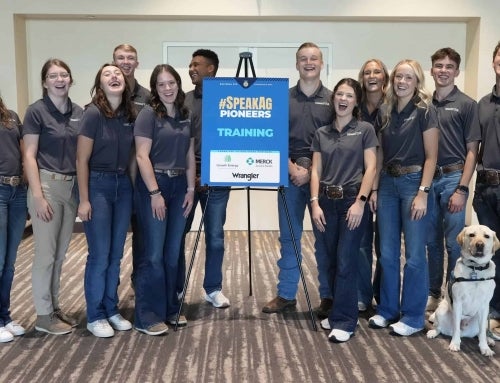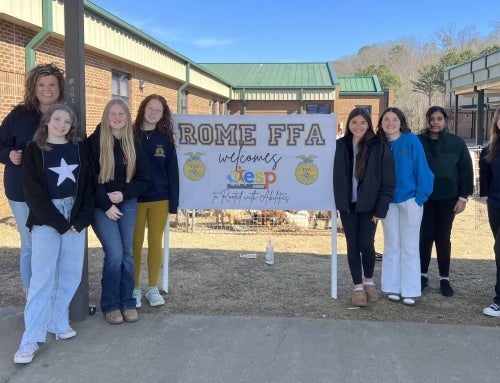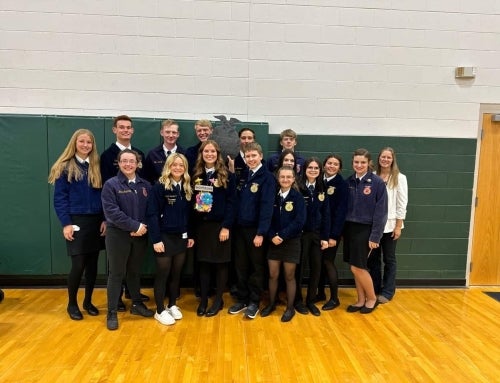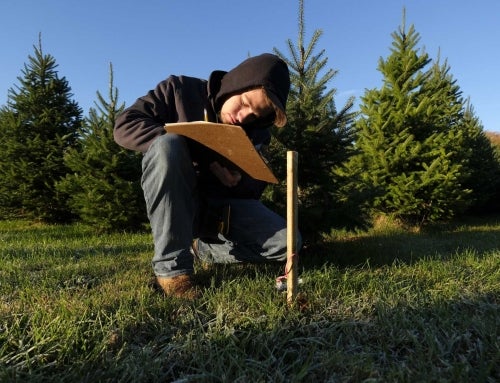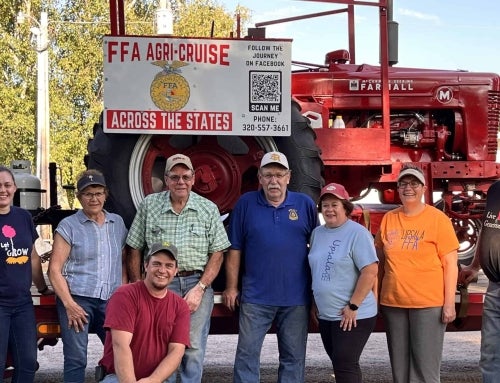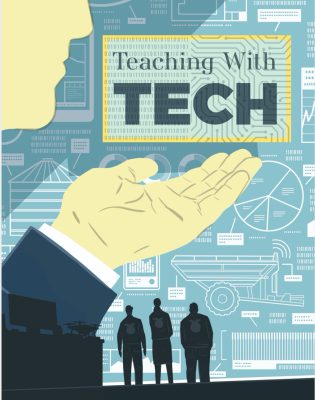
Incorporating technology into the curriculum is more common than ever and offers big benefits.
Jaidyn Seelye had never eaten bok choy or red lettuce until she started growing both as part of a classroom project at Southeast Region Career and Technology Center in Wahpeton, N.D.
Cultivating the vegetables under different conditions was part of the Growing Beyond Earth Challenge, a NASA-led science, tech- nology, engineering and mathematics (STEM) education program that invites students to grow vegetables in a self-contained growing unit called a MARSfarm. The data collected in the classroom was sent to NASA to help the space agency determine which foods to grow at the International Space Station.
Once the veggies were slathered with a little ranch dressing, Seelye, 15, and her fellow Wahpeton FFA members liked the taste.
Participating in the Growing Beyond Earth Challenge was about more than experimenting with new foods. Seelye believes it was also a good way to see how technology could be used in the classroom.
“Hands-on learning is really beneficial because it gives you different ways to learn,” she says. “We got to be really creative with the lighting and controls and then watch the plants grow over the week, which was really cool.”
Experiences like Seelye’s are not unusual, as teachers trade whiteboards and notebooks for high-tech tools that transform their classrooms into advanced centers for learning and exploration.
Incorporating technology into the curriculum is more common than ever and offers big benefits.
The latest data from Common Sense Media shows that 73% of teachers rated digital creation tools as effective for engaging students in learning and 63% said the same of digital games.
Consider these five examples and benefits of technology in the classroom.
1. Build Career Skills
In 2021, Kasey Naylor used funds from the Grants for Growing program, sponsored by Tractor Supply Company, to purchase an ultrasound machine for students enrolled in agriculture classes at Sam Rayburn High School in Ivanhoe, Texas.
The technology will allow students to perform ultra- sounds on the cattle living on the 90-acre school farm and determine their reproductive status. Students can also study the ultrasound images to learn about fetal development.
“Students want a visual,” explains Naylor, agriculture teacher and Sam Rayburn FFA advisor. “They are so used to looking at TikTok and YouTube and learn better when they can access images.”
Naylor also hopes the students can use the ultrasound machine during off-site visits to determine whether the pigs, sheep and goats their classmates are raising for FFA projects are pregnant.
“There are a lot of kids taking animal science classes who want to be vets,” she adds. “This technology will show them some of the other career possibilities, like be- coming an ultrasound technician or exploring careers in animal reproduction.”
Another tool being used in the classroom is the video game Minecraft, through which players use blocks to create their own three-dimensional worlds. The platform allows players to design their terrain, extract raw materials, build structures, plant crops and make tools, and the education edition of the game incorporates features built for learning environments, including classes for STEM, language arts, coding and history.
These tools do more than just build technology skills. Minecraft allows for purposeful play, social interaction and collaboration, and it also builds soft skills, according to Laylah Bulman, senior business program manager for Minecraft: Education Edition at Microsoft.
“The skills that you learn in Minecraft: Education Edition are transferrable to other areas of life,” she says. “It has such a meaningful impact on students.”
2. Spark Creativity
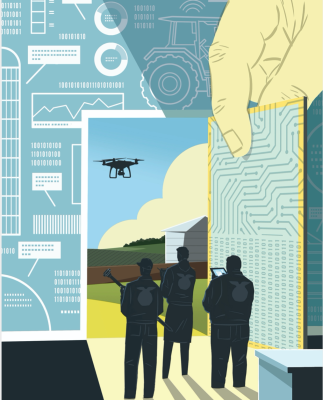
Technology in the classroom can help students see how what they are learning in other classes, like science classes, applies to agriculture.
When students at the Southeast Region Career and Technology Center, including Seelye, heard they would be growing vegetables as part of a science experiment for NASA, their excitement was contagious.
“It really drew them in,” recalls agriculture teacher and FFA advisor Breanna Pastir.
Pastir signed up to participate in the Growing Beyond Earth Challenge hoping that the hands-on project would help her students see the real-world application of their classroom instruction, and it worked. In fact, once the initial trial was complete, members of the Wahpeton FFA Chapter were eager to see how other factors like the light spectrum, water levels and fertilizer application affected plant growth. Pastir encouraged them to continue experimenting and recording their results.
“A lot of times we do things in the classroom and our students can’t see the application,” she recalls. “For them to see that the research they’re doing is useful — that’s my favorite part about the project and the reason we continue to do it.”
3. Promote Personalized Learning
During a trip to Indiana for the National FFA Convention, a Sam Rayburn FFA member was introduced to an app that makes it possible for beekeepers to check the health of their hives from their smartphones. This was a lightbulb moment for the student beekeeper, Naylor says.
“It really opened his eyes to all of the ways we can use technology,” she says. “The more kids see opportunities to use technology in new ways, the more engaged they are in learning.”
Pastir encourages students to use the MARSfarm as inspiration for their agriscience fair projects. It allows them to come up with their own experiments and, she adds, “They can see how what they are learning in other classes, like science classes, applies to agriculture.”
4. Create Connections
Technology has been especially important during the COVID-19 pandemic, according to Bulman. She points to game-based learning tools like Minecraft: Education Edition as one of the many high-tech tools that have allowed students to remain connected outside the classroom.
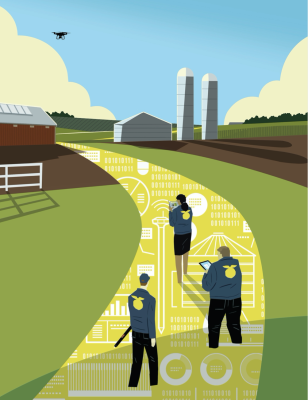
Technology can help teachers build an interactive experience that connects, educates and inspires students.
“We’re able to connect kids virtually in this world when they couldn’t get together in real life,” she says. “There is this amazing value to giving kids a tool that makes them want to keep learning.”
In the process of building virtual worlds and creating characters, students learn to work together, set goals, solve problems and develop communication skills. Bulman believes that
the gaming aspect draws in students who might be otherwise uninterested in lessons about math, history, computer science and environmental studies.
Minecraft: Education Edition also allows teachers to create non-player characters to provide instruction, insert web links, communicate via chat and build an interactive experience that connects, educates and inspires students.
“You can leverage the technology to transform learning,” Bulman says. “The power of technology is that it allows students to find their passions.”
5. Inspire an Interest In Agriculture
The Sam Rayburn FFA Chapter also used grant funds to purchase a drone.
The remote-controlled device provides an aerial view of farm fields, allowing agriculture students to understand how soil fertilizer and other inputs affect crop health and yield. Students can also navigate the drone over the pastures to check cows. Naylor hopes that seeing the drone flying over campus and hearing students talk in the halls about what they get to do in agriculture classes will have another benefit: encourage more students to enroll in agriculture classes.
“It’s something different to bring to the classroom,” she says. “I hope it’ll get kids all across campus thinking, ‘I should’ve taken an ag class.’ ”
Real-World Technologies In Classrooms
The National FFA Organization and Microsoft created the FarmBeats for Students program, giving students access to the modern tools growers are using on farms. The program combines
a hardware kit — which includes an array of sensors and high-tech tools — with curriculum and activities designed to give students a hands-on experience in applying precision agriculture techniques to food production. Learn more at FFA.org/FarmBeats-For-Students.
Looking for more ways to bring innovations in agriculture to the classroom? The Virtual FFA Blue Room will host speakers from leading ag tech organizations throughout the year — not just during national convention — to share insights and info through short presentations. Tune in at Convention.FFA.org/The-Blue-Room to learn the latest from technology leaders.

